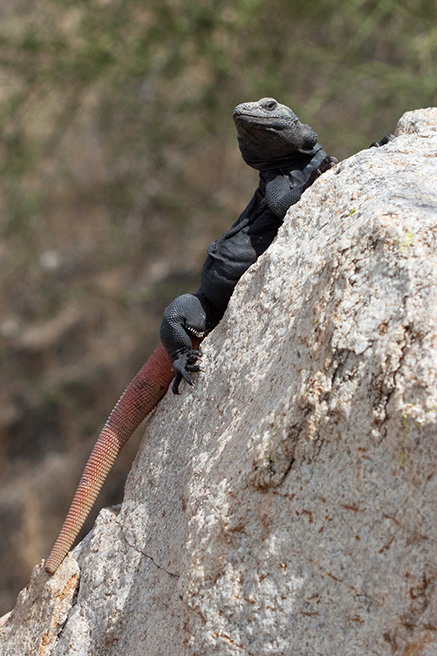
Good Climate News Roundup – March 2025
Mar 31, 2025
 A desert mountain landscape at the Chuckwalla National Monument. Credit: America Fitzpatrick, LCV
A desert mountain landscape at the Chuckwalla National Monument. Credit: America Fitzpatrick, LCV
Stunning mountain and desert landscapes, abundant wildlife, immense cultural and sacred significance, and a wealth of outdoor recreation opportunities are just some of the features the proposed Chuckwalla National Monument in Southern California offers. Spanning 600,000 acres of Bureau of Land Management public land near Joshua Tree National Park, the region provides habitat and migration pathways for native wildlife such as the Mojave Desert tortoise and Bighorn Sheep. It is also home to the Agua Caliente Band of Cahuilla Indians, Cahuilla Band of Indians, Colorado River Indian Tribes, Fort Yuma Quechan Indian Tribe, Torres Martinez Desert Cahuilla Indians, and Twenty-Nine Palms Band of Mission Indians.
Last month, in response to years of Tribal, local, and national advocacy, California Senators Alex Padilla and Laphonza Butler, along with Representative Raul Ruiz (D-CA-25), introduced legislation to create the Chuckwalla National Monument and expand Joshua Tree National Park to protect this region and all it has to offer.
LCV has supported the locally-led campaign to protect this naturally and culturally rich landscape by elevating its importance to key decision-makers in the Biden-Harris administration and Congress.
Senator Alex Padilla (D-CA)
LCV Conservation Program Director America Fitzpatrick and Senior Federal Advocacy Campaigns Director Leah Donahey joined local leaders and national advocates on a trip to the proposed monument earlier this month.
On the trip, Leah and America hiked through incredible slot canyons, Mecca Hills, the Hidden Spring trail, and other scenic areas within the proposed monument boundaries – all while cultivating an understanding of the land, a love of the desert, and deepening relationships with national, state, local, and Tribal leaders in the campaign.

LCV and partner organizations planned this visit to bring together diverse voices and perspectives within the Chuckwalla coalition to educate and inspire one another. The group realized this goal by connecting representatives from several national organizations with local groups including LCV’s state affiliate California Environmental Voters.

The opportunity to collaborate across national, local, and Tribal organizations was an eye-opening experience for everyone involved. Representatives from national organizations had the opportunity to learn about the land and its history, use, and significance firsthand from people with deep knowledge of and connections to the region. This included hearing from local guides about the area’s unique wildlife – including the proposed monument’s namesake, the chuckwalla lizard – and a native plant locals use to brew tea to boost their immune systems.

They also learned about the cultural and sacred significance of the land to local Indigenous peoples. The monument proposal encompasses the ancestral homelands of the Iviatim, Nüwü, Pipa Aha Macav, Kwatsáan, and Maara’yam peoples (Cahuilla, Chemehuevi, Mojave, Quechan, and Serrano nations). The land remains critical to the cultural, spiritual, and physical well-being of these local Tribal nations.
The visitors from national organizations were also able to provide local partners with support and guidance on how to elevate the campaign to the public and key decision-makers. Along with strengthening existing relationships and developing new ones with local partners, national organizations demonstrated their commitment to supporting this campaign on a federal level.
The diversity of voices present during this trip also created an opportunity for some to rethink what it means to conserve and protect a place.
Historically, the conservation movement has centered around the idea that the conservation and preservation of natural spaces requires the absence of human activity. But, Indigenous groups point out, their people have utilized these and other lands to fulfill their basic needs for a millennia without destroying them. This discrepancy between the Indigenous way of life and the environmental movement’s typical idea of “conservation” necessitates a reevaluation of this limited (and typically white) perspective.
Visitors to the proposed monument discussed the need for the conservation movement to acknowledge that places are not just wild when they are without people. They can be protected and used in ways that are compatible with people being part of the land and using it for various purposes.

The proposed Chuckwalla National Monument and the surrounding land show how conservation of a natural space can work in harmony with people in that space. On the proposed monument and surrounding land, people coexist with the pristine landscapes and unique and varied wildlife the region has to offer. The land hosts solar and wind developments alongside people camping, hiking and driving off-road vehicles. America says the area is a “great example of where clean energy and conservation can coexist, and tackle the climate crisis while making sure we’re building resilience to climate change, in one place.”
The coexistence of conservation and clean energy development in this area is thanks in part to California’s Desert Renewable Energy Conservation Plan. The plan maps out regions of the state with high potential for renewable energy development and areas that are important for wildlife, and how they can be managed to minimize conflict and make the land work for everyone.
Leah and America have since returned from their trip to California, but the work to establish the Chuckwalla National Monument continues. Earlier this month, Secretary of the Interior Deb Haaland visited the proposed monument site to hear from state, local, and Tribal groups who have led the call for the national monument designation.
The designation of the monument would keep these lands accessible to nearby communities, and would be a huge win for the wildlife, protection of sacred Indigenous lands and outdoor recreation. LCV is committed to our local partners and this campaign, and urges President Biden to designate the Chuckwalla National Monument as quickly as possible.
Visit the Protect Chuckwalla National Monument coalition site to learn more about the campaign and how you can get involved.